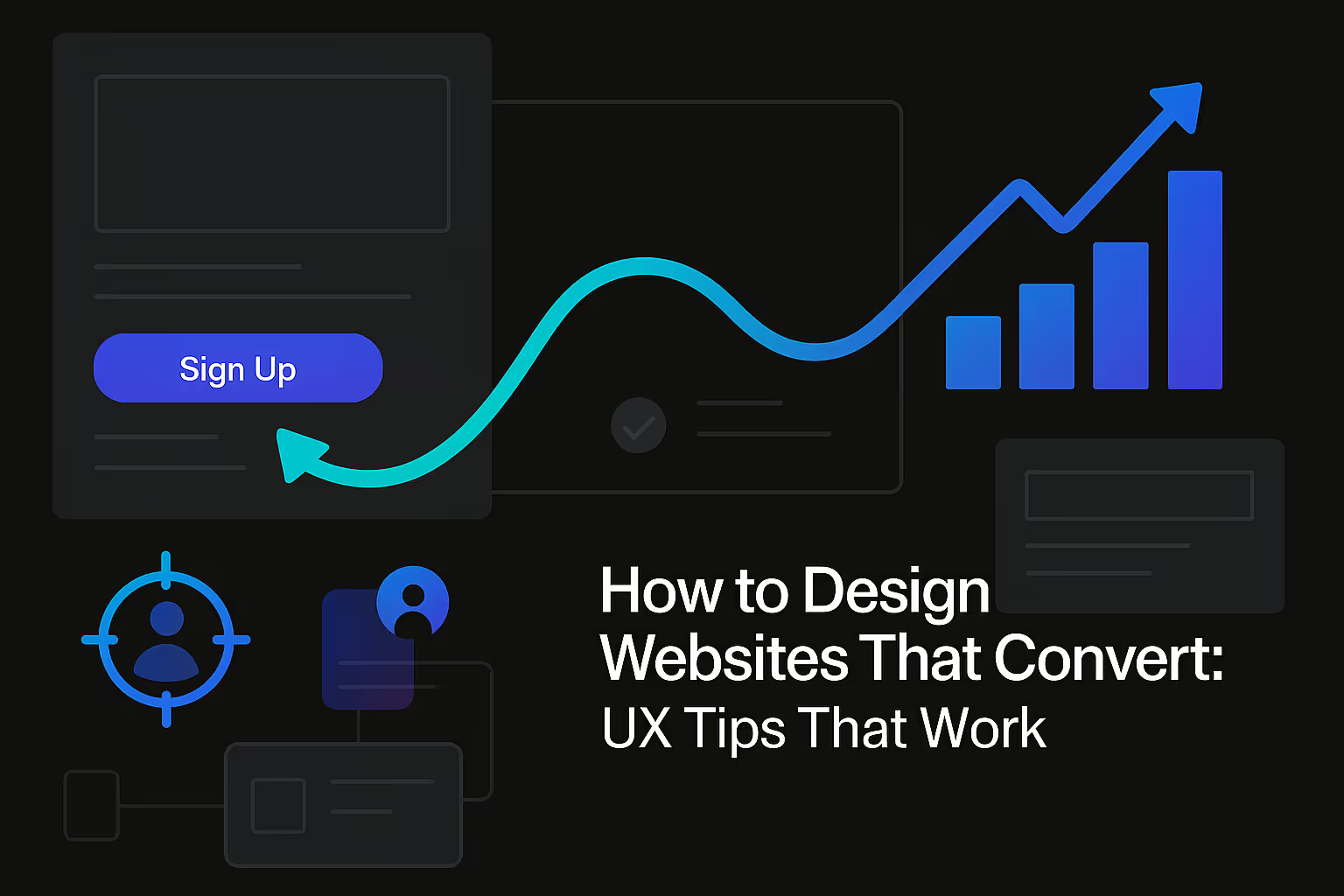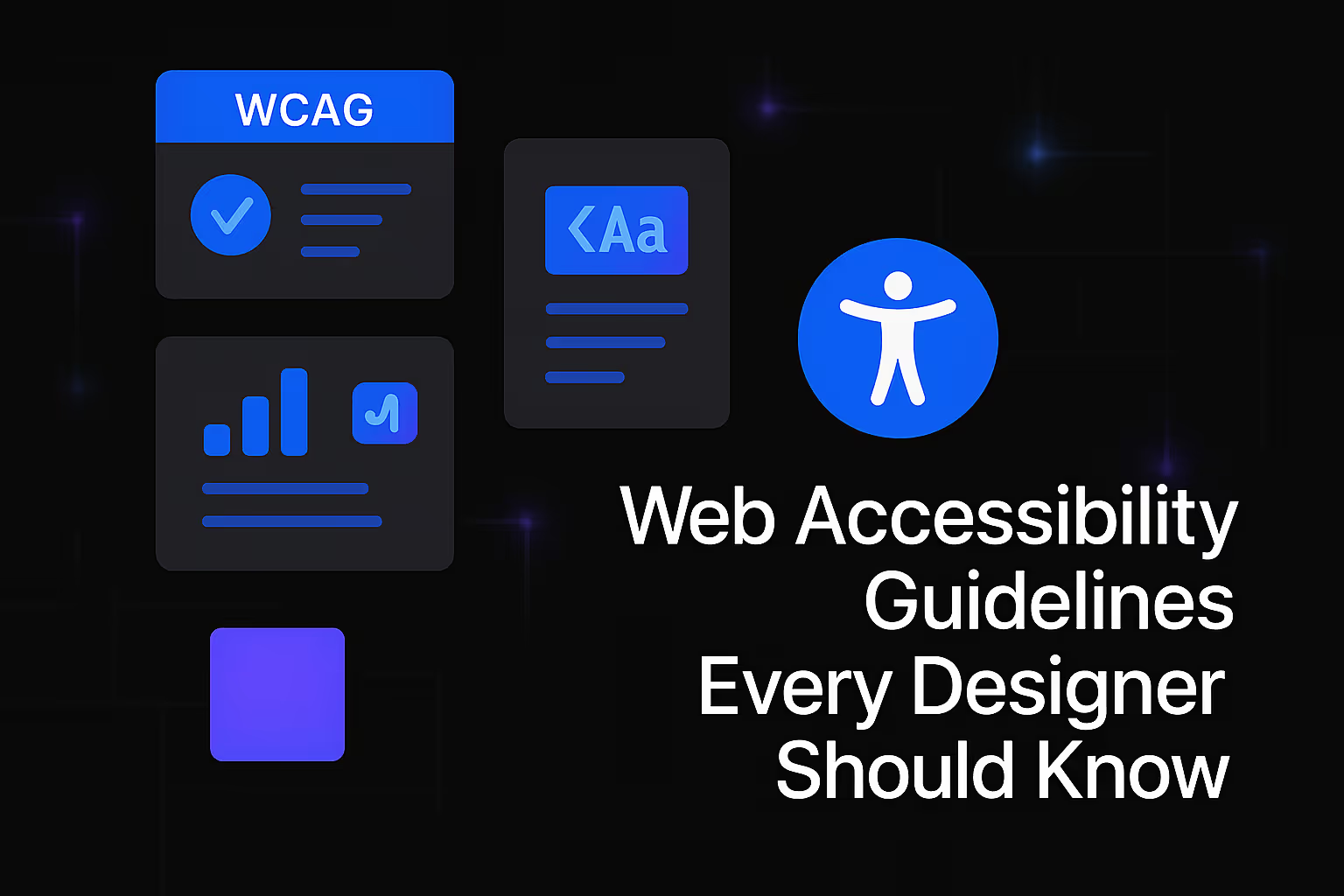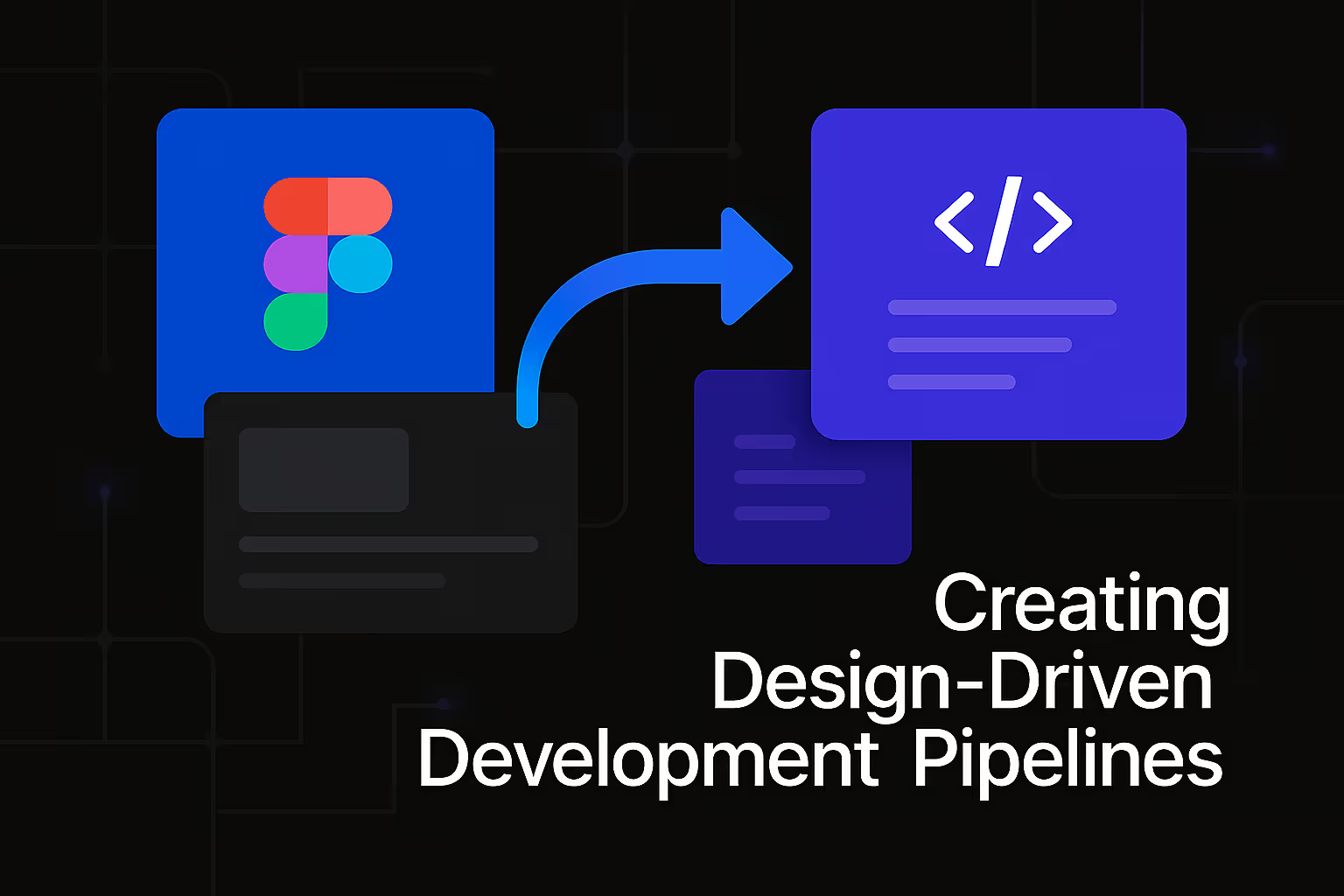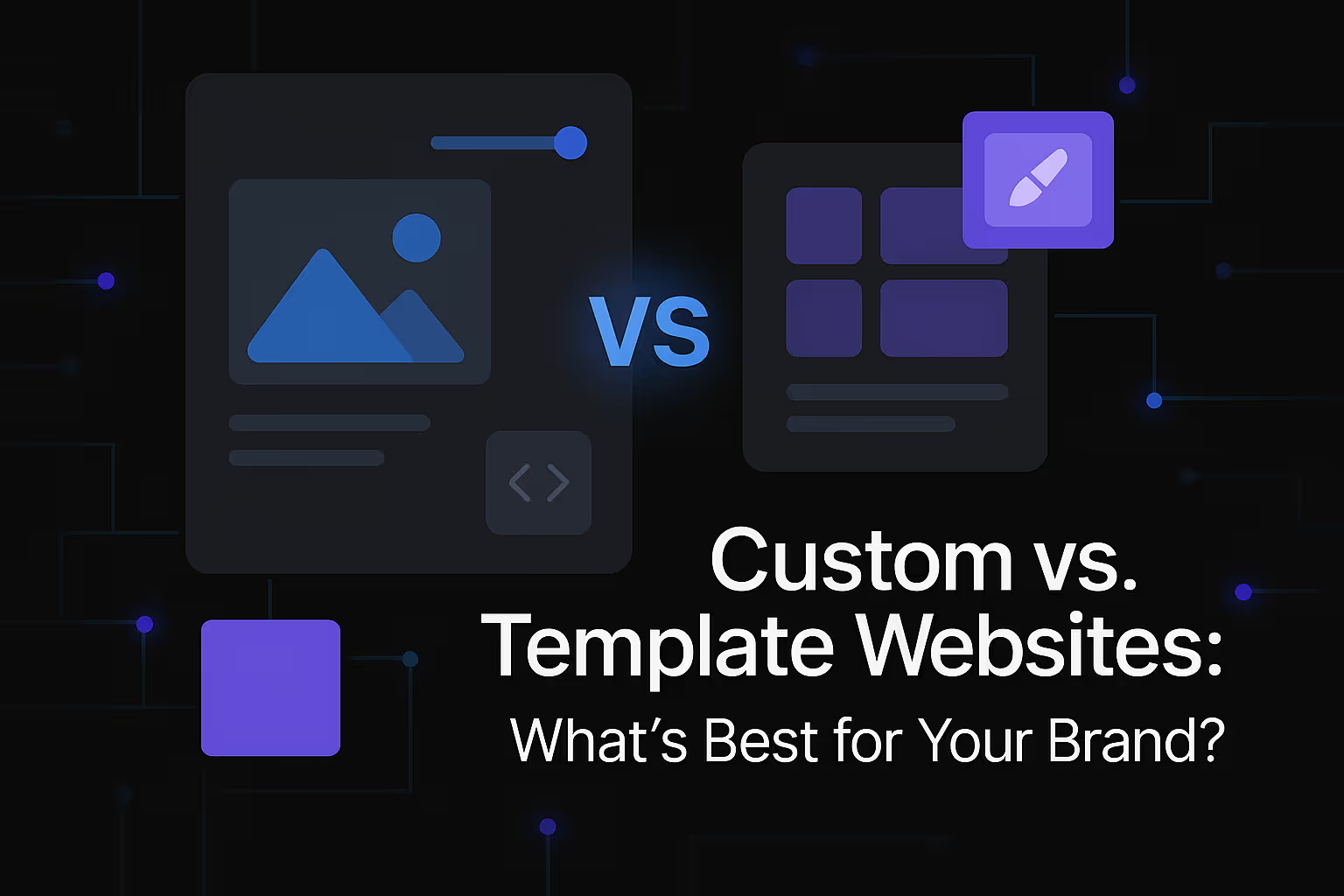How to Design Websites That Convert: UX Tips That Work

Every business with an online presence shares a common goal: to transform website visitors into valuable customers. It’s a pursuit that transcends mere aesthetics, moving beyond a visually appealing design to embrace a profound understanding of human behavior. In the competitive digital landscape, a beautiful website is simply not enough; it must be a meticulously engineered tool designed for conversion. This fundamental shift in perspective — from mere design to a user experience (UX) that drives action — is the cornerstone of online success. It’s about creating an intuitive, engaging, and trustworthy environment where visitors feel compelled to take the next step, whether that’s making a purchase, signing up for a newsletter, or requesting a service. A website built with conversion in mind acts as a tireless salesperson, guiding, reassuring, and ultimately, closing deals.
Understanding Your User: The Cornerstone of Conversion
The most effective websites are not designed in a vacuum; they are built upon a deep, empathetic understanding of their target audience. Before a single line of code is written or a pixel placed, the foundation of a conversion-focused website lies in comprehensive user research. This user-centric design philosophy dictates that every decision, from navigation structure to content presentation, must directly address the needs, desires, and pain points of the people who will actually use the site. It’s about stepping into their shoes, understanding their motivations, and anticipating their journey.
To truly understand your users, a variety of methods can be employed. Developing detailed user personas is a powerful exercise, creating semi-fictional representations of your ideal customers, complete with demographics, behaviors, motivations, and goals. These personas act as a constant reminder of who you are designing for. Mapping out user journeys helps visualize the path a user takes through your website, identifying potential obstacles and moments of truth. Beyond these qualitative approaches, quantitative data from website analytics can reveal patterns in user behavior, highlighting popular pages, common exit points, and areas where users might be struggling. Surveys, interviews, and usability testing also provide invaluable direct feedback, shedding light on what works and what doesn't. By grounding your design decisions in empirical data and genuine empathy, you lay the groundwork for a website that resonates deeply with its audience, naturally fostering engagement and driving conversions.
Crafting Intuitive Navigation and Information Architecture
A website’s navigation is akin to a roadmap for its users. If that roadmap is convoluted, misleading, or incomplete, visitors will quickly become lost and frustrated, ultimately abandoning their journey. Intuitive navigation is paramount for a high-converting website, ensuring users can effortlessly find the information they seek and seamlessly progress through their desired tasks. This involves creating a clear, logical structure that mirrors the user's mental model, making it easy to predict where information will reside.
Strategic information architecture goes hand-in-hand with navigation. This involves organizing and labeling website content in a way that is logical and accessible. Clear, concise menu labels are crucial, avoiding jargon or overly clever terms that might confuse visitors. Drop-down menus, while sometimes useful, should be employed judiciously to prevent overwhelming users with too many options at once. Furthermore, strategic internal linking is not just an SEO best practice; it’s a powerful UX tool. By linking relevant content within your site, you guide users to related information, encouraging deeper exploration and increasing their time on site. This not only keeps them engaged but also reinforces the interconnectedness of your content, leading them naturally toward conversion points. For larger websites with extensive content, a robust and efficient search functionality is indispensable. A prominent search bar that delivers accurate, relevant results can dramatically improve the user experience, allowing visitors to quickly bypass navigation and pinpoint exactly what they need, a critical factor in reducing friction and accelerating the conversion process.
Optimizing Visual Design for Impact and Clarity
Visual design extends far beyond mere aesthetics; it's a powerful communication tool that subtly influences user perception, guides attention, and evokes emotional responses, all of which contribute to conversion. A well-executed visual design speaks volumes, reinforcing brand identity while simultaneously facilitating ease of use. Central to this is visual hierarchy, the art of arranging elements on a page to indicate their relative importance. By strategically using size, color, contrast, and spacing, you can guide the user's eye to the most critical information, such as your value proposition, key features, or, crucially, your calls to action. Important elements should naturally stand out, drawing immediate attention and ensuring users don't miss vital cues.
The psychological impact of color and branding cannot be overstated. Colors evoke emotions and associations, and their deliberate use can reinforce your brand message and influence user behavior. For instance, blue often conveys trust and reliability, while green can signify growth or nature. Consistency in branding, including logo placement, color palettes, and overall visual style, builds familiarity and trust, making users feel more comfortable and confident interacting with your site. Furthermore, high-quality imagery and video are vital for engaging users and conveying complex messages efficiently. Stock photos often fall flat; unique, professional visuals that reflect your brand and product can significantly enhance credibility and emotional connection. Video content, in particular, can demonstrate product usage, showcase testimonials, or tell a compelling brand story in a dynamic, easily digestible format. Finally, readability and typography are fundamental. Choosing legible fonts, maintaining appropriate line spacing, and ensuring sufficient contrast between text and background colors makes your content easy to consume. When content is effortlessly readable, users are more likely to absorb your message, understand your offerings, and ultimately, convert.
Compelling Content and Calls to Action
Even the most impeccably designed website will struggle to convert if its content fails to resonate or its calls to action are unclear. Content is the heart of your message, and it must be crafted with precision, clarity, and a keen understanding of your audience's needs. Persuasive copywriting goes beyond simply stating facts; it focuses on benefits, addresses pain points, and inspires action. Every word should contribute to guiding the user towards their goal and your conversion objective. Avoid jargon, be concise, and ensure your message is easily digestible. Remember, users often scan rather than read every word, so employing headings, subheadings, and short paragraphs makes your content more approachable.
The value proposition must be immediately clear. What unique benefit do you offer? Why should a user choose you over a competitor? This value should be woven throughout your content, particularly in prominent areas like your homepage hero section. Once you've effectively communicated your value, it's time to direct users to the next step through strategic calls to action (CTAs). CTAs are the pivotal prompts that encourage users to convert, whether it's "Buy Now," "Sign Up for Free," "Download the Ebook," or "Contact Us." Their placement, design, and wording are critical. CTAs should be visually prominent, with contrasting colors that make them stand out. The text should be action-oriented, concise, and convey a clear benefit or next step. Avoid generic phrases; instead, opt for language that creates urgency or excitement. Importantly, limit the number of CTAs on a single page to avoid decision paralysis. Guide users towards a primary action, with secondary actions being less prominent. A well-designed CTA is not a demand; it's an invitation, subtly nudging the user forward on their conversion journey.
The Mobile-First Imperative and Responsive Design
In today's interconnected world, where smartphones are often the primary device for accessing the internet, ignoring mobile users is a fatal flaw for any website aiming for high conversions. The mobile-first imperative is not just a trend; it's a fundamental shift in how websites should be conceived and developed. Search engines heavily prioritize mobile-friendliness in their ranking algorithms, making it an undeniable SEO factor. More importantly, a significant portion of your audience will likely interact with your website on a mobile device, and their experience will directly impact your conversion rates. A clunky, difficult-to-navigate mobile site will lead to immediate abandonment, regardless of how good the desktop version might be.
Responsive design is the most effective approach to addressing this imperative. Rather than creating separate versions for different devices, responsive design ensures your website seamlessly adapts its layout, images, and content to fit any screen size, from a large desktop monitor to a small smartphone. This provides a consistent and optimized experience for every user, regardless of their device. Key mobile UX considerations include ensuring touch targets (buttons and links) are large enough to be easily tapped with a finger, simplifying navigation for smaller screens, and optimizing images for faster loading times on mobile networks. Avoid pop-ups or intrusive elements that obscure content on smaller screens. Prioritize crucial information and streamline processes, recognizing that mobile users are often on the go and seeking quick solutions. By embracing a mobile-first philosophy and implementing robust responsive design, you cater to the habits of modern users, remove friction, and significantly boost your potential for conversions across all platforms.
Speed, Performance, and Technical Foundations
Beyond the visible layers of design and content, the underlying technical foundation of your website plays a crucial, often unseen, role in conversion rates. A slow or unreliable website frustrates users, damages credibility, and directly impacts your bottom line. Page load speed is perhaps the most critical technical factor influencing user experience and, consequently, conversions. Studies consistently show that even a few seconds of delay can lead to a significant drop in bounce rates and conversions. Users expect instant gratification, and if your site takes too long to load, they will simply navigate away to a faster competitor.
Optimizing page speed involves a combination of factors. Clean code and efficient development practices are foundational. This means minimizing unnecessary code, using efficient programming languages, and ensuring all scripts and styles are optimized for quick delivery. Image optimization is another significant contributor; large, uncompressed images can drastically slow down a page. Implementing image compression, using next-gen formats, and leveraging lazy loading techniques ensures visuals enhance, rather than hinder, performance. The choice of your hosting provider also plays a pivotal role. Reliable hosting with fast servers and robust infrastructure ensures your website is consistently accessible and performs optimally, even during peak traffic. Furthermore, server response time, browser caching, and content delivery networks (CDNs) all contribute to a swift and smooth user experience. While these technical aspects might seem removed from the "design" process, they are inextricably linked to UX and, by extension, conversion. A technically sound website provides a frictionless path for users, enabling them to complete tasks quickly and efficiently, directly contributing to higher conversion rates and a more positive online experience.
Building Trust and Credibility
In the digital realm, where anonymity can sometimes foster skepticism, building trust and credibility is paramount for converting visitors into loyal customers. Users are more likely to engage and complete transactions on a website they perceive as reliable, secure, and legitimate. This isn't just about showing a lock icon in the address bar; it's about weaving trust signals throughout your entire website experience.
One of the most powerful forms of reassurance is social proof. Testimonials from satisfied customers, positive reviews, case studies demonstrating successful outcomes, and mentions in reputable media outlets all serve as third-party endorsements that validate your offerings. Displaying these prominently can significantly alleviate user doubts. Security signals are non-negotiable. An SSL certificate (HTTPS) is a basic requirement, indicating that data transmitted between the user and your site is encrypted. Beyond technical security, clear privacy policies, terms of service, and transparent data handling practices reassure users that their information is safe. Easy access to contact information and support channels demonstrates accountability and availability. Providing a clear phone number, email address, or live chat option signals that there are real people behind the website, ready to assist. Beyond these explicit signals, professionalism permeates every aspect of your site. A well-maintained, bug-free website that handles errors gracefully (e.g., custom 404 pages) conveys competence. Consistent branding, accurate information, and a commitment to user privacy all contribute to an overarching sense of trustworthiness, transforming hesitant visitors into confident customers.
Continuous Improvement: Testing, Analytics, and Iteration
The journey of designing a website that converts is not a one-time project; it’s an ongoing process of discovery, refinement, and adaptation. The digital landscape is dynamic, user behaviors evolve, and what works today might be less effective tomorrow. Therefore, a commitment to continuous improvement through data-driven insights is essential for sustained conversion success.
A/B testing and multivariate testing are indispensable tools in this process. A/B testing involves comparing two versions of a webpage element (e.g., a headline, button color, or image) to see which performs better in terms of conversions. Multivariate testing takes this a step further, testing multiple variations of several elements simultaneously. These tests provide empirical data on what resonates with your audience, allowing you to make informed decisions rather than relying on assumptions. Beyond direct testing, analytics platforms provide a wealth of information about user behavior. Delving into metrics like bounce rate, time on page, conversion funnels, and traffic sources can reveal patterns and identify areas of friction. Tools like heatmaps and session recordings offer a visual understanding of how users interact with your pages, showing where they click, scroll, and hesitate. This qualitative data can provide invaluable context to the quantitative numbers.
Finally, actively gathering user feedback through surveys, polls, and dedicated usability testing sessions provides direct insights into their experiences, frustrations, and desires. The insights gained from all these methods feed back into an iterative design process. This means continually analyzing data, identifying opportunities for improvement, implementing changes, and then testing again. UX design for conversion is not about achieving perfection in a single launch; it's about embracing a cycle of learning, adapting, and optimizing to progressively enhance the user experience and, in turn, drive ever-higher conversion rates.
Conclusion
Designing a website that truly converts is an intricate blend of art and science, a delicate dance between aesthetic appeal and strategic functionality. It moves beyond the superficial, delving into the core of user psychology and behavior to create an online environment that is not only visually pleasing but also profoundly effective. The principles outlined — from understanding your user and crafting intuitive navigation to optimizing visual elements, delivering compelling content, embracing mobile responsiveness, ensuring technical excellence, and meticulously building trust — are not isolated tips, but interconnected facets of a holistic strategy.
Every element on your website, every word, every image, and every interaction, should be meticulously considered for its role in guiding the user towards a desired action. A truly conversion-focused website is a frictionless journey, a clear conversation, and a reassuring experience that subtly nudges visitors from curiosity to commitment. By prioritizing the user experience at every turn, continuously learning from data, and adapting to evolving digital landscapes, businesses can transform their online presence from a mere brochure into a powerful, high-performing conversion engine. This dedication to user-centric design is not just a trend; it is the fundamental pathway to unlocking sustainable growth and achieving profound success in the digital age.
Similar Insights
Stay Updated with Our Insights
Join our newsletter for the latest trends and tips in web development and digital marketing.




